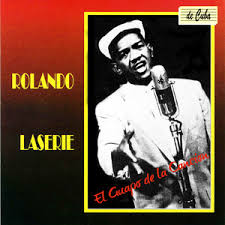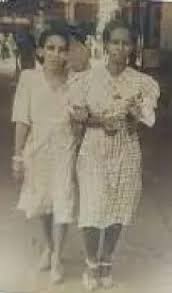
“AMALIA BATISTA” MITAD HISTORIA Y LEYENDA, LA SENSACION MUSICAL DE AYER Y TODAVIA HOY. VIDEOS/ PHOTOS.
Es una de las más conocidas zarzuelas cubanas, se estrenó como sainete en el emblemático Teatro Martí de La Habana, el 21 de agosto de 1936, con música del compositor y director de orquesta Rodrigo Prats y el libreto a cargo de Agustín Rodríguez. Con los roles protagónicos asumidos por la soprano Maruja González y el tenor Miguel de Grandy, coreografía de Julio Richards y puesta en escena Agustín Rodríguez. Fue recibida y aclamada por el público capitalino que esa noche colmó la famosa sala.
¿Quién fue Amalia Batista?
Escribía el costumbrista Félix Soloni, en su columna del periódico El Mundo, que se trató de un nuevo tipo folclórico habanero, como Cecilia Valdés, María la O, Mersé, María Belén Chacón… que saltaba a la escena del teatro vernáculo.
Como otros tantos tipos, mitad historia, mitad leyenda, Amalia Batista aparece como una mulata de 1880, que se codeaba con las demás protagonistas de las tragedias tradicionales.
Argumento
Está basada en la común historia de la mulata criolla mantenida por hombres blancos ricos que se disputaban los favores y la atención; los cuales eran despreciados por ellas tan pronto veían saciados los deseos y aparecía en la vida alguien que les produjera un nuevo interés carnal esencialmente.
En la obra se desarrolla un drama lleno de ilusiones, esperanzas, pasiones, desdichas y venganzas, situaciones que dan lugar a bellas romanzas llenas de diferentes sentimientos de amor, rencor, despecho, desengaños, celos, lágrimas, odio y arrepentimiento; todos ellos en ocasiones mezclados en una misma romanza como muestra de la realidad viva y cambiante de los seres humanos.
El texto y la música en determinados pasajes realzan evocadoramente la belleza sensual característica de la mujer criolla, de la exuberante naturaleza y del paisaje, conformando una estampa muy cubana en toda su magnitud.
La obra estaba dedicada a Rita Montaner, se inspiraron en la tipología lírica de esta famosa cantante y actriz cubana quien, sin embargo, no llegó a estrenarla por desavenencias con el director de la compañía de teatro lírico del Martí. Pasaron cuatro años desde el estreno para que Amalia Batista fuera interpretada por Rita Montaner en el teatro nacional el 9 de agosto de 1940.
En torno a la actuación de Rita, expresó Prats que con esa única interpretación pudieron ver la Amalia Batista tal y como había sido concebida. Además señaló que fue todo un acontecimiento poder escucharle la Romanza y Salida de Amalia Batista, en la cual él había intentado reflejar, al máximo, la arrolladora personalidad de Rita Montaner.
Hay quien afirma que se llamaba en verdad Amalia Perdomo y que tocaba la flauta en una orquesta del barrio de Los Sitios, agrupación musical que luego pasó a dirigir.

OTRAS VERSIONES
Otras versiones dan por seguro esta historia de Amalia Batista como una bella mulata, que por su pobreza y gran belleza unicamente salía con personas pudientes. Vivia en Cuba (1850-1944?) y se hizo famosa por ser una persona muy caritativa, sobretodo con los niños (ella no pudo tener hijos). También se le conoce por sus virtudes patrioticas que en diferentes oportunidades escondió en su casa de la calle Florida a compatriotas revolucionarios que luchaban contra el colonialismo.
Por sus actitudes nobles y generosas todavía es recordada y le dicen a los de su barrio “amalianos” y hay un restaurante gastronomico llamado en honor a ella “Jardín Amaliano”.
Tras su muerte se hicieron varias canciones en referencia a las mujeres alegres ó “mulatas de rumbo”. En 1936 se estrenó en el teatro Martí la Zarzuela “Amalia Batista”, un sainete lírico en dos actos y siete cuadros con música de Rodrigo Prats y guion de Agustin Rodriguez.
El viernes 21 de agosto de 1936 se estrenaba en el teatro Martí la zarzuela Amalia Batista, con música de Rodrigo Prats y guión de Agustín Rodríguez.
Sobre ella dijo Rodrigo Prats a Soloni: “Muchas veces en mi vida había oído hablar de cierta mulata famosa que vivió por Jesús María y Los Sitios a finales del siglo XIX y comienzos del XX. También algunos viejos me hablaron de otra Amalia Batista de fama, que brilló en tiempos más remotos.
“Pero ni la una ni la otra tomé como modelo para la protagonista de mi obra. Me sirvió, eso sí, como punto básico, la vieja copla popular”.
Decía la letrilla:
Conmigo no hay quien resista.
Ni me busques ni me nombres.
Yo soy Amalia Batista.
Esa que mata a los hombres.
Pero esa mujer halla su perdición en un amor desgraciado. Afirma entonces la copla:
Lo que tienes a la vista
Ni te extrañe ni te asombre.
Yo soy Amalia Batista,
Que se muere por un hombre.
En una version popular del cantante y sonero Rolando La Serie de la afamada zarsuela del maestro Rodrigo Prats:
“AMALIA BATISTA” HALF HISTORY AND LEGEND, THE MUSICAL SENSATION OF YESTERDAY AND STILL TODAY. VIDEOS/PHOTOS.
One of the best-known Cuban zarzuelas, it premiered as a sainete at Havana’s iconic Teatro Martí on August 21, 1936, with music by composer and conductor Rodrigo Prats and a libretto by Agustín Rodríguez. The leading roles were played by soprano Maruja González and tenor Miguel de Grandy, choreographed by Julio Richards, and staged by Agustín Rodríguez. It was received and acclaimed by the capital’s audience, which filled the famous hall that night.
Who was Amalia Batista?
Costumbrista Félix Soloni wrote in his column in the newspaper El Mundo that she was a new Havana folkloric type, like Cecilia Valdés, María la O, Mersé, María Belén Chacón, and so on, who leaped onto the vernacular theater scene.
Like so many other types, half history, half legend, Amalia Batista appears as a mulatto woman from the 1880s, who rubbed shoulders with the other protagonists of traditional tragedies.

Amalia Batista (derecha), junto a su prima Carmelina.
Plot
It is based on the common story of the Creole mulatto woman kept by wealthy white men who vied for her favors and attention; the men were scorned by them as soon as their desires were satisfied and someone appeared in their lives who essentially sparked a new carnal interest.
The play unfolds a drama filled with dreams, hopes, passions, misfortunes, and revenge, situations that give rise to beautiful romances filled with different feelings of love, resentment, spite, disappointment, jealousy, tears, hatred, and regret; all of them sometimes blended into a single romance as a reflection of the living and changing reality of human beings.
The text and music in certain passages evocatively highlight the sensual beauty characteristic of Creole women, of exuberant nature, and of the landscape, creating a truly Cuban image.
The play was dedicated to Rita Montaner and was inspired by the lyrical typology of this famous Cuban singer and actress, who, however, never premiered it due to disagreements with the director of the Martí lyric theater company. Four years passed after the premiere before Amalia Batista was performed by Rita Montaner at the National Theater on August 9, 1940.
Regarding Rita’s performance, Prats stated that with that single performance, they were able to see Amalia Batista as she had been conceived. He also noted that it was a truly remarkable experience to hear her perform the Romanza y Salida de Amalia Batista, in which he had attempted to capture, as much as possible, Rita Montaner’s overwhelming personality.
Some claim that her real name was Amalia Perdomo and that she played the flute in an orchestra in the Los Sitios neighborhood, a musical group she later went on to direct.
OTHER VERSIONS
Other versions assume this story of Amalia Batista as a beautiful mulatto woman, who, due to her poverty and great beauty, only dated wealthy people. She lived in Cuba (1850-1944?) and became famous for being a very charitable person, especially with children (she was unable to have children). She is also known for her patriotic virtues, as she hid revolutionary compatriots fighting against colonialism in her house on Florida Street on several occasions.
She is still remembered for her noble and generous attitudes, and people in her neighborhood are called “Amalianos,” and there is a gastronomic restaurant named “Jardín Amaliano” in her honor.
After her death, several songs were written about cheerful women or “mulatas de rumbo.” In 1936, the zarzuela “Amalia Batista,” a lyrical farce in two acts and seven scenes with music by Rodrigo Prats and a script by Agustin Rodriguez, premiered at the Martí Theater.
On Friday, August 21, 1936, the zarzuela Amalia Batista premiered at the Teatro Martí, with music by Rodrigo Prats and a script by Agustín Rodríguez.
Rodrigo Prats told Soloni about her: “Many times in my life I had heard of a certain famous mulatto woman who lived in Jesús María and Los Sitios at the end of the 19th and beginning of the 20th centuries. Some old people also told me about another famous Amalia Batista, who shone in more ancient times.
“But I didn’t use either one as a model for the protagonist of my work. The old folk song served me well, though, as a basic point.
The lyrics went:
With me, no one can resist.
Don’t look for me, don’t even name me.
I am Amalia Batista.
She who kills men.
But that woman finds her doom in an unhappy love. The song then states:
What you have in sight
Don’t surprise you or surprise you.
I am Amalia Batista,
Who is dying for a man.
In a popular version by singer and sonero Rolando La Serie of the famous zarsuela by maestro Rodrigo Prats:
Agencies/ Wiki/ CiroBianchi/ Lecturas/ Internet Photos/ www.thecubanhistory.com/ Arnoldo Varona.
THE CUBAN HISTORY, HOLLYWOOD.



